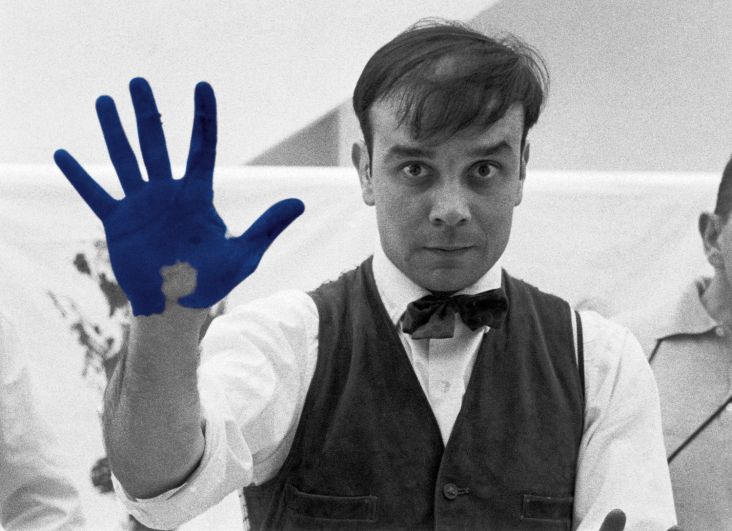The power of focus: three quick marketing tricks to boost your small business
With freelance work naturally eating up most of your day coupled with a mountain of admin tasks and endless emails and phone calls, who has time to think about marketing? As any small business owner knows, it can be tough to find a spare second to promote oneself.

Image licensed via Adobe Stock
But even if you only have half an hour each day, there are things you can do to make a difference and get your name out there. We've set out three highly effective marketing tricks that you can consider every day to attract the people you want to work with and win new or repeat business.
You'll find the following tactics help you to become more streamlined and efficient in your marketing efforts, and hopefully more successful too – saving you time and money along the way. What’s the secret? It’s all about focus. Read on to discover more!
1. Know thy skills and thy audience off by heart
You could say you do absolutely everything for everyone if that suits, but you might be spreading yourself a little too thinly and opening yourself up to the broader competition. You need to focus. Hone in on exactly what makes you unique and figure out who will appreciate your input.
In which case, pick a specialism and choose a target audience. You might, for instance, create brand identities for independent architects and designers. Or perhaps you focus on crafting simple websites for SMEs. Whatever you choose, write down who you are and what you do and who you do it for. Pin it to your wall. From this point forth, you will live and breathe it.
What you choose to do and who you work for will inform your entire marketing strategy. You'll be amazed how easy everything else falls into place from this point on. When you've got a spare minute, your first tasks are as follows:
Update the copy on your website: Write with your audience in mind: what will they like to see and read? What are their interests? What are their problems? How can you solve them? How can you add value?
Define who you are, how you help and why you're better: Once you've nailed your web copy, come up with a clear and compelling value proposition, i.e. the main reason why someone should hire you. It will be the first thing people read when they land on your website, so take some time to write it and don't be afraid to tweak if it isn't working. It should explain how you solve clients' problems (relevancy), deliver specific benefits (quantified value) and tell the ideal customer why they should hire you and not from anyone else (unique differentiation).
Freshen up your social media: Make it flow with what you've updated on your revised website. Add your value proposition to your bios, for instance, and ensure your profiles match what you're saying elsewhere. Use the same logo or profile pic for your avatars, so people can easily recognise you across different platforms.
2. Follow your audience and get heavily involved in their sector
Specialise in architecture and design? It's time to sink your teeth into loads of relevant Twitter and Instagram accounts, blogs and magazines, events and exhibitions. You're going to spend a little time each week doing one or more of the following:
Read up on the latest industry news: With your morning cup of coffee, grab a copy of the newest trade magazine, or peruse your favourite blog, and enjoy finding out more about the movers and shakers – the very people you'd love to rub shoulders with. Which brands are making waves? Who's doing what? Soak up the news to boost your industry knowledge.
Get involved in the conversation: Follow relevant people on Twitter and retweet their content or reply to their tweets. Twitter has always been one of the most effective ways to build contacts and network; it's how I built Creative Boom in its early days. Create Twitter Lists to flatter people and get yourself noticed. People love being made to feel important, but creating Lists will also help you to keep track of your industry. Don't have time to share content? Use Buffer to schedule social media posts, so you remain active even when you're busy.
Comment on other blogs and magazines: Sign up for profiles on relevant online publications and magazines to raise your profile by leaving comments on articles. You'd be surprised how many people will click on your website link to find out more about what you do. I've won a client via Boomerang by getting involved in online discussions. It's a great way to showcase your skills.
Book into networking events, exhibitions and shows: Get yourself out there because nothing beats face-to-face interactions with other human beings. However, your mission isn't to just network; you also want to learn and soak up as much information as possible. Because if you want to be an expert in architecture and design, then you have to know the industry inside-out.
3. Blog like it's going out of fashion
With all the insights you're gaining from a daily ritual of tweeting, reading and commenting, you'll undoubtedly have plenty to blog about. There should be no excuse – populate your website with fresh content daily. But not just any content; words and images that are relevant to your target audience. Because you're hitting home your specialism as well as tackling your SEO.
You want to continually tell Google, for instance, that your website is about creating brand identities for small architecture and design firms in London. In which case, aside from your website's copy (which should mention this naturally throughout), you should write daily blog posts on one of the following:
Industry events and shows: If we're still talking architecture and design, then you need to create yourself a calendar because this sector is jam-packed with exhibitions, conferences and events. London Design Festival, Clerkenwell Design Week, Milan's Salone del Mobile, Maison & Objet – there are endless things to attend, gain invaluable insight from and, of course, blog about.
Spotlights and interviews with key people: Sticking to our example theme of architecture and design, why not contact various industry firms or brands, and ask if you can interview or feature them on your blog. You might want to talk about their range of products or find out more about a recent installation.
Share tips that your audience would love: Tutorials, how-tos – they continue to be popular and can attract a wealth of visitors to your website. With your audience in mind, write your tips and tricks. Don't worry about giving away any corporate secrets – people won't want to do things themselves; they'll want you to handle the work.
Please note, if you want to use images from elsewhere, always seek written permission before uploading to your website. Nine times out of 10, they'll be delighted that you want to write about them and will have "press" images readily available.
One final tip – whatever you add to your blog, don't forget to share it on all your social media channels. You want to stay relevant, active and exciting as well as consistent in your communications.
To recap
All of the above can be kept in mind whenever you find some spare time for marketing. Make sure you:
Remember your specialism and audience: Who are you and what are you good at? Which sectors are you targeting? Who is your audience? It will inform your entire marketing strategy – how you write, how you speak, what you attend, who you talk to.
Update your website and social media: Make sure you have a compelling value proposition and successfully define your business and who you work with. Stay on top of tweets, Instagram posts and comments. Don't be inactive; engage with people.
Read all about your target industry: Get wise about what's happening, who's who and which events to attend. Live and breathe the very audience you hope to attract. Their passions, their interests – all of it!
Get involved in the conversation: Online, become someone people recognise and enjoy chatting to. Tweet and follow as well as comment and network with anyone relevant to your chosen field. Have an opinion. Be interesting.
Blog, blog and blog some more: Create content and conversation that your target audience will enjoy reading or engaging with. Become a hub of activity. Be someone people turn to as an expert in your field. Share it all on social media!
Rinse, reiterate and repeat: After you've tackled our three marketing tricks, what can you do better next time? What worked and what didn't? What will you improve tomorrow? Good luck!




 by Tüpokompanii](https://www.creativeboom.com/upload/articles/58/58684538770fb5b428dc1882f7a732f153500153_732.jpg)


 using <a href="https://www.ohnotype.co/fonts/obviously" target="_blank">Obviously</a> by Oh No Type Co., Art Director, Brand & Creative—Spotify](https://www.creativeboom.com/upload/articles/6e/6ed31eddc26fa563f213fc76d6993dab9231ffe4_732.jpg)
















